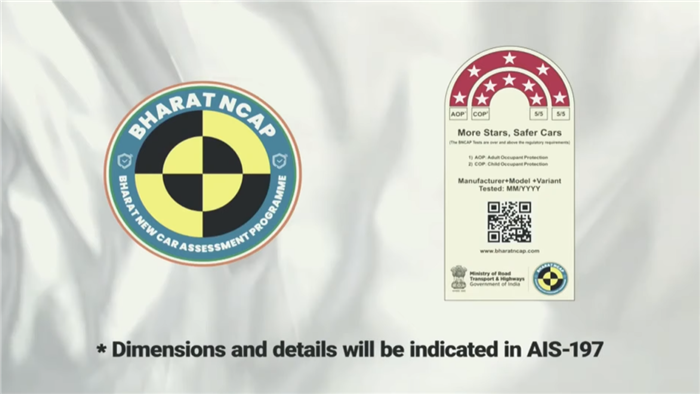Safety and reliability are paramount when it comes to purchasing a new car. With the recent launch of the Bharat New Car Assessment Programme (Bharat NCAP), India has set a new benchmark in vehicle safety. But how does it compare to the Global New Car Assessment Programme (GNCAP)? Let’s dive in and understand the intricacies of both.

Bharat NCAP: The Dawn of a New Era in Indian Automobile Safety
The official rollout of the Bharat NCAP, unveiled by the Union Minister of Road Transport and Highways, Nitin Gadkari, is a significant move in bolstering the safety parameters for Indian cars. Set to be operational from October 1, this new initiative mandates testing based on the Automotive Industry Standard (AIS) 197.
Not only will Bharat NCAP elevate the safety levels for passengers, but it will also bolster the export prospects of Indian automobiles. At its core, Bharat NCAP mirrors the Global NCAP in using star ratings to determine a car’s safety during crash tests. The primary differentiation? It’s tailored to Indian driving conditions and regulations.
Comparative Categories: Bharat NCAP vs. Global NCAP
For a clearer perspective, let’s compare the rating categories of both programs:
Vehicle Testing and Star Ratings: Under Bharat NCAP, carmakers can willingly present their vehicles for AIS 197 testing. Based on crash test outcomes, vehicles will be awarded star ratings, considering both Adult Occupants (AOP) and Child Occupants (COP). The safety assist technologies fitment will also factor into the final rating. Notably, the eligible vehicles are those with up to 8 seats and weighing under 3.5 tonnes.
Contrarily, the Global NCAP also awards star ratings based on AOP and COP scores. To get a coveted 5-star AOP rating under GNCAP, vehicles must score a minimum of 34 points. In comparison, Bharat NCAP requires at least 27 points for the same.
Crash Testing Types: Both NCAPs have global crash test protocols. Bharat NCAP tests will include the offset deformable barrier frontal impact test, side impact test, and pole side impact test. Furthermore, it includes six airbags, ESC, three-point seatbelts for all, improved braking systems, and more.

GNCAP follows a similar testing procedure but also necessitates features like pedestrian protection systems and seatbelt reminders for all in line with UN127 or GTR9.
Test Speed: GNCAP’s testing speed is 64km/h, simulating a 50km/h crash. Bharat NCAP aligns with this frontal crash test speed but has variations for the side and pole-side impact tests, set at 50km/h and 29km/h, respectively.
One should also acknowledge that Bharat NCAP extends beyond conventional passive safety tests. It encompasses evaluations for ICE cars, CNG vehicles, and Electric Vehicles (EVs). In a departure from conventional NCAP formats, Bharat NCAP will provide a composite rating, amalgamating results from adult and child crash tests.
Implementation & Future Prospects
For the process to roll, under Bharat NCAP, automakers will fill out Form 70-A and submit it to a designated central government agency as per AIS 197 norms. The agency will assign star ratings and periodically refresh them, making the ratings accessible on a designated portal.
As we approach the October 1 kick-off date for this program, the government’s commitment to safety is evident. Nitin Gadkari emphasized that the program would soon incorporate tests for electric vehicles and alternative fuels. Encouragingly, more than 30 car models have already been queued by manufacturers for evaluation.
Our Take: Bharat NCAP vs Global NCAP-
The Bharat NCAP is a welcome and much-needed initiative for India, ensuring that vehicles plying on the roads are of top-notch safety standards. By aligning closely with the globally recognized GNCAP and tailoring the standards to Indian conditions, India is taking a monumental step towards safer roads and more robust vehicles.
As consumers become more safety-conscious, these programs offer a reliable benchmark for making informed decisions. Whether you’re a car manufacturer looking to enhance your models or a prospective buyer seeking the safest ride for your family, understanding these safety parameters is vital.
Happy and safe driving!





